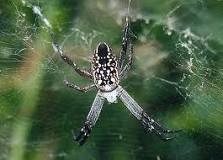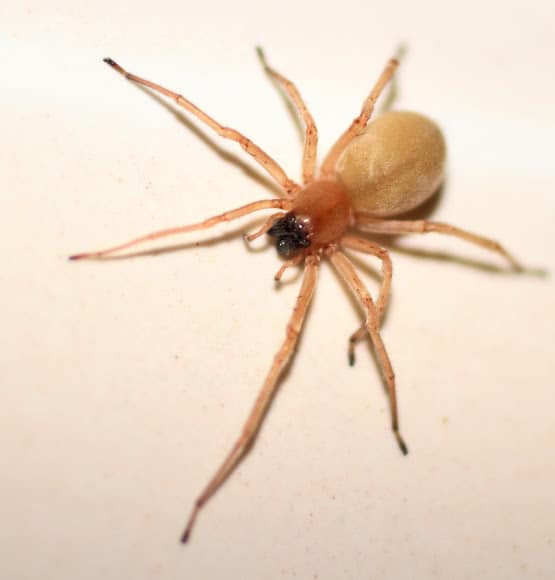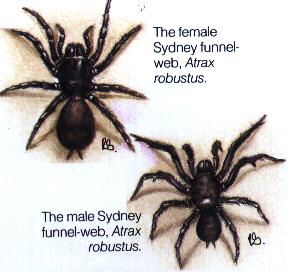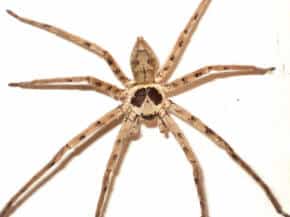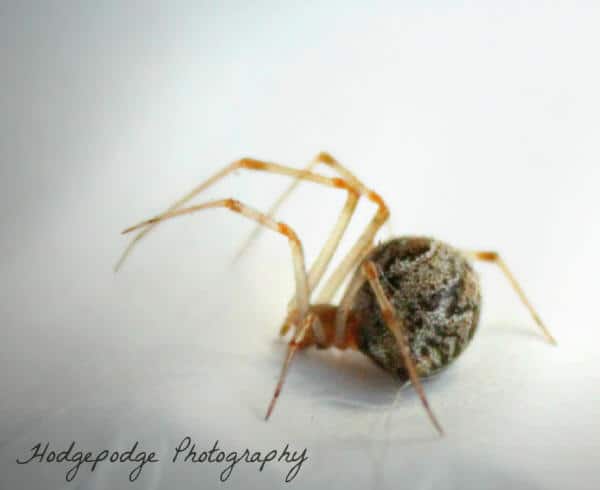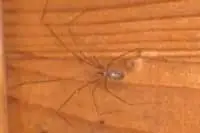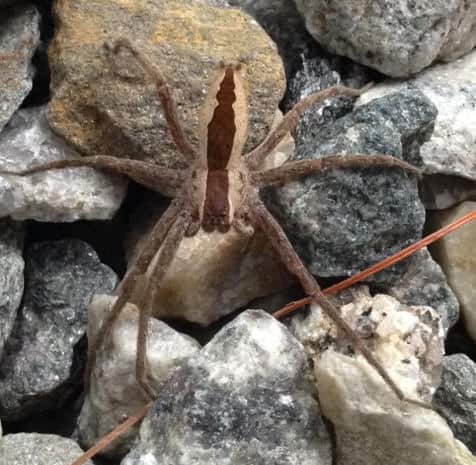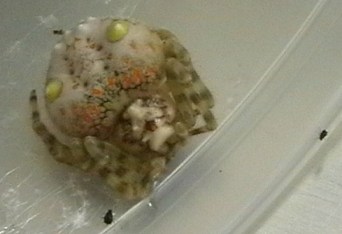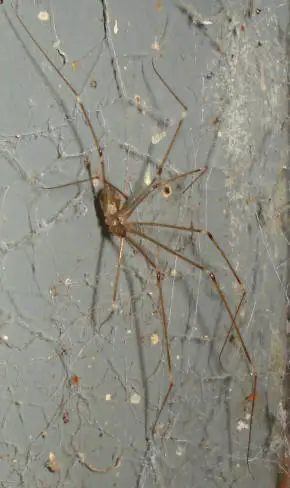There are many different species of Tent Spiders in Australia. The largest Tent Spider is 19 mm (around 1 inch) long and is found in the northern parts of Australia. The female has a grey head and a black body with white spots. The tiny male Tent Spider has an orange body. The Latin name for […]
Sac Spiders
Sac spiders belong to the genus Cheiracanthium and the family Clubionidae. They are quite small and easy to overlook—about 1/4 – 3/8 inch long, with no conspicuous markings. The front legs are longer than the other three pairs. Sac spiders are quite pale. A common house species, the yellow sac spider is pale greenish, tan […]
Funnel-Web Spiders in Australia
The Sydney Funnel-web Spider (Atrax robustus) The Sydney Funnel-web Spider (Atrax robustus) is believed to be limited to an area of about 160 kilometres from the centre of Sydney. Other species of Funnel-Web Spider are found in Eastern Australia, Victoria, South Australia and Tasmania. They are probably the most venomous aggressive spider in the world, […]
Huntsman Spider
Many people are confused by 5 similar looking spiders – the harmless Huntsman, Wolf Spider, Southern House Spider (Kukulcania), Fishing Spider and the notorious Brown Recluse. Occasionally, the Huntsman Spider, Heteropoda venatoria (Linnaeus), is misidentified as a Brown Recluse. However, the colour pattern on the carapace of this species is reversed, with a light median mark on a dark […]
False Widow Spider – Steatoda nobilis
Habitat and range In common with other members of the Theridiidae family, Steatoda nobilis constructs a cobweb, i.e., an irregular tangle of sticky silken fibers. As with other web-weavers, these spiders have very poor eyesight and depend mostly on vibrations reaching them through their webs to orient themselves to prey or warn them of larger animals that could injure […]
Common House Spider
The common house spider (Parasteatoda tepidariorum), referred to as American house spider internationally, is a spider species of the genus Parasteatoda which is mainly indigenous to the New World, with P. tepidariorum australis (common gray house spider) also encountered in some pars of Myanmar and Pakistan. American house spiders are synanthrope and build their tangled web in or near […]
Daddy Long Legs
The animal which most biologists call “daddy-long-legs”, is a spider, Pholcus phalangioides, which belongs to the spider family Pholcidae, order Araneida, class Arachnida. Pholcid spiders are araneomorph spiders which kill and digest their prey using venom. However there is no scientific basis for the urban myth that daddy-long-legs are the most venomous, poisonous or toxic spiders […]
Nursery Web Spider
Nursery Web spiders – (Pisaurina sp. Family Pisauridae) – These spiders resemble the wolf spiders (Lycosidae), but have a different eye pattern. Pisaurids have their eyes arranged in 2 rows, the posterior row slightly recurved, the median eyes in the second row slighly (if any) larger than the others. (Wolf spiders have eyes arranged in 3 rows). The […]
Magnificent Spider
There are at least 2 species of spiders with the common name Magnificent spider. The Bolas spider is one of them. The female is 12 mm long while the male is 2 mm. The Magnificent spider is also known as the Angler spider. This spider is part of a family (the Mastophoreae) within the orb-weaving […]
Daddy Long-legs
The name ‘Daddy-Long-Legs’ has been used for at least two different kinds of arachnids – spiders (Pholcus phalangioides) and harvestmen (Opoliones). Daddy Long Legs (Pholcus phalangioides) The animal which most biologists call “daddy-long-legs”, is a spider, Pholcus phalangioides, which belongs to the spider family Pholcidae, order Araneida, class Arachnida. Pholcid spiders are araneomorph spiders which kill and digest […]

